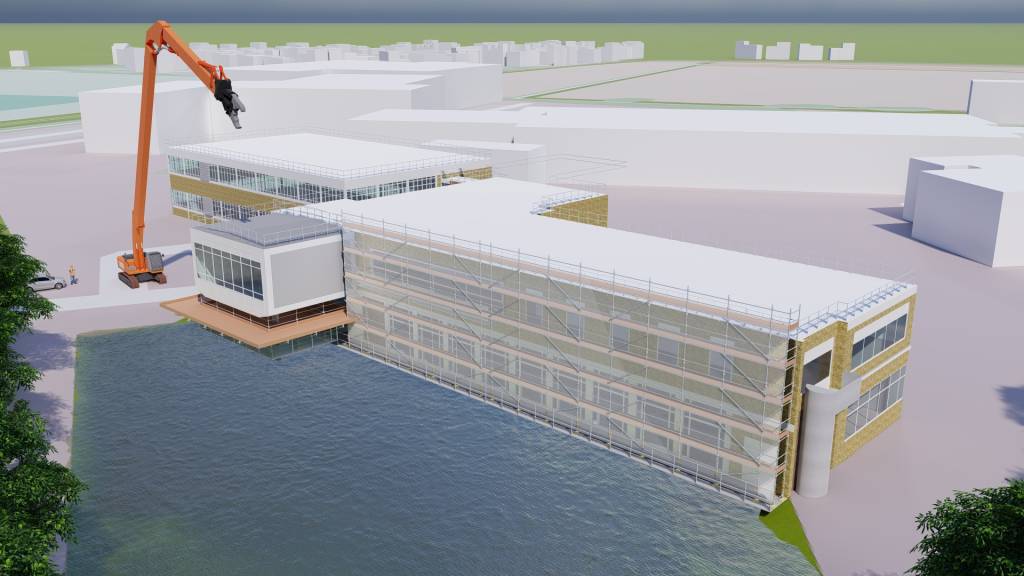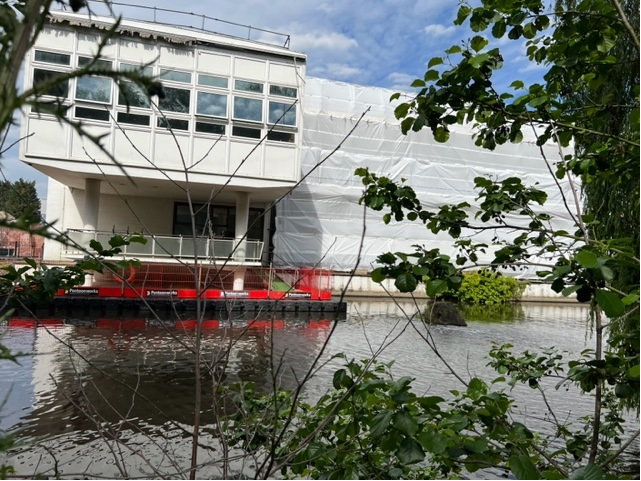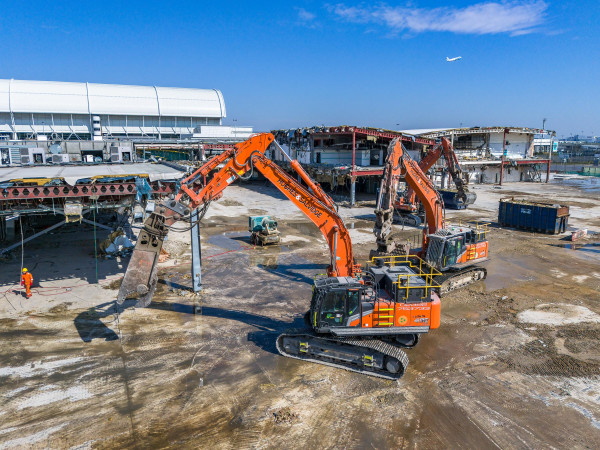All finished at Rusham Park
Luke Gould 7th February 2023
Demolition - Asbestos Removal - Soft Strip
During our recent project for Balfour Beatty, we encountered a few interesting challenges. These included the shape of local water courses and a floodplain - of course these were challenges that our expert team were keen to meet and overcome. Here, we look into the Rusham Park site and get expert insight from Lewis Memari, who managed the project.
In Egham, the site is owned by Royal Holloway, University of London, and is overlooked by historic university buildings from some of the surrounding hills. Our scope of works included asbestos removal, soft strip, structural demo, and crushing/recycling from the site.
What Challenges Were Faced?
Structures built into bodies of water can be very striking, and make for some impressive feats of architecture and engineering. More often than not, though, these also pose some rather unique challenges if and when the time comes for demolition. In this instance, the Brunel building extended out into a lake - the protection of which was paramount in compliance with the Environmental Agency permit for the project, which required the lake to be protected from all debris. Also, the ongoing monitoring of the lake’s PH levels was necessary, as well as the overall environmental impact of our work.
How Were They Overcome?
A lake screen was used, as is standard practice when carrying out demolition work in the vicinity of waterways. The section of the building which overlapped with the footprint of the lake, however, required a slightly less run-of-the-mill approach. A floating pontoon was installed under and around that section of the building, with a ply finish to catch any fallen debris - thus ensuring the safety of the lake and any flora and fauna therein.
What was the result?
The mixed approach of a lake screen and the pontoon was an unqualified success, thanks to our highly qualified team! The lake was fully protected, with the PH level not once entering the “danger zone” for flora and fauna throughout the project. An excellent result for Hughes and Salvidge, Balfour Beatty, and The Environment Agency.
Lewis Memari reflected “It’s challenges like this that keep the job interesting; it wasn’t a straightforward site by any means but the experience of the Hughes and Salvidge team means we’ve got a few tricks up our sleeve - we’re more than capable of presenting solutions to any potential stumbling blocks and we’ve proven it again on this site.”





